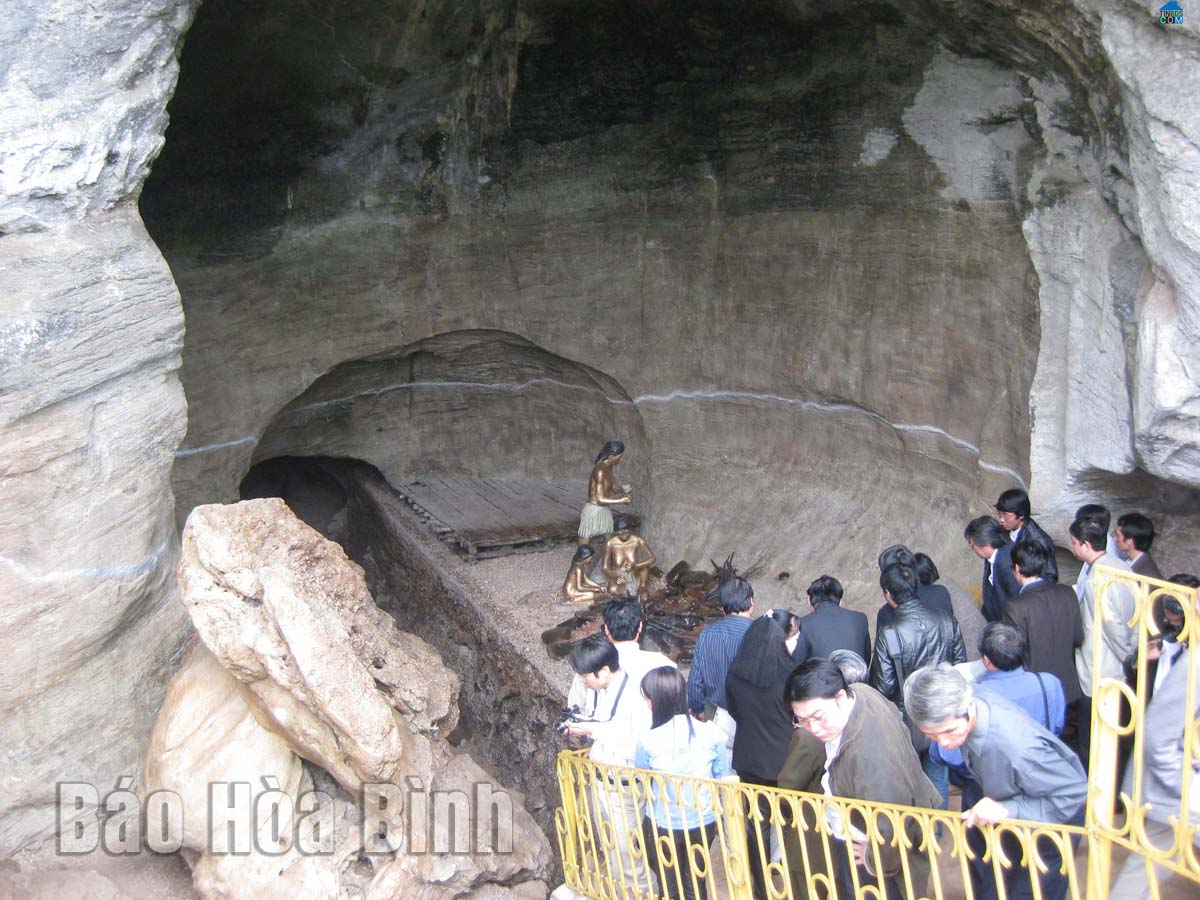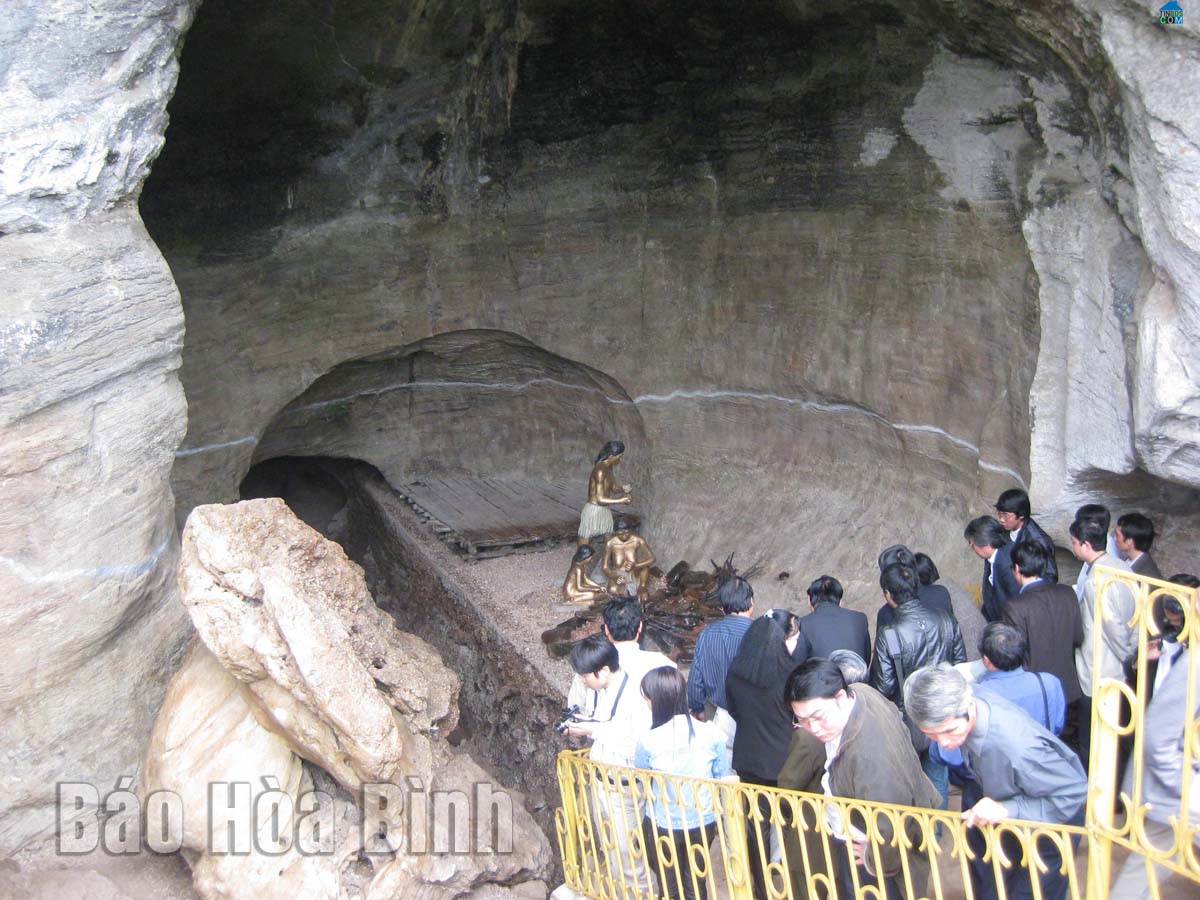
(HBO) – With 72 caves and archaeological relic sites, Hoa Binh province has been identified as one of the cradles of the "Hoa Binh Civilisation” by archaeologists, scientists, and anthropologists. Over the past years, local authorities have paid great attention to the conservation and promotion of this civilisation’s values.
"Hang xom Trai” (Trai Village Cave) in Tan Lap commune of Lac Son district is
one of the typical archaeological relic sites of the "Hoa Binh Civilisation”.
According to the provincial Museum, karst caves
in Hoa Binh attracted attention from archaeologists of the French School of the
Far East in the 1920s. Through surveys, excavations, and studies, scientists
found that those karst caves contain vestiges of a civilisation that developed
between the late period of the Old Stone Age’s and the early period of the New
Stone Age, and named it "Hoa Binh”.
The "Hoa Binh Civilisation” existed about 30,000
- 4,000 years ago not only in Vietnam but also other places across Southeast
Asian such as Indonesia, Myanmar, Thailand, and the Philippines, as well as
China. More than 130 places dating back to the civilisation have been found in
Vietnam, and over half of them were discovered by Vietnamese archaeologists
during 1966 - 1980. Those relics scattered in various localities but
concentrated in Hoa Binh (72 sites) and Thanh Hoa (32 sites).
The typical relic sites and artefacts discovered
in Hoa Binh reflect the life and livelihoods of prehistoric humans. Most of the
relics have been protected, restored, and submitted to seek recognition, and
many of them have gained the status of national importance.
In the recent past, all-level Party committees,
administrations, and people of all ethnic groups in the province, especially
the cultural sector, have been stepping up the conservation and promotion of
this civilisation’s cultural values. They have enhanced cooperation with
domestic and international organisations in civilisation research, surveyed
archaeological relics, and taken measures for managing, conserving, and bringing
into play its values. In addition, communications in different forms and
languages have been stepped up to introduce the Hoa Binh Civilisation to major
cultural, economic, and political centres of Vietnam and at international
scientific conferences.
To mark the 90 years since the world recognised
the Hoa Binh Civilisation and gave it the name (1932 - 2022), at the beginning
of this year, the provincial People’s Committee issued Plan No. 50/KH-UBND on
the organisation of cultural, sports, and tourism events.
Luu Huy Linh, Deputy Director of the provincial
Department of Culture, Sports and Tourism, said the cultural sector is planning
activities to celebrate the 90th anniversary of the recognition and naming of
the "Hoa Binh Civilisation”, including seeking permission for excavating some
archaeological caves in Lac Son district, inviting scientists to a national
seminar on the civilisation, and working with the People’s Committee of Hoa
Binh city to choose a road to name "Colani” so as to honour contributions by
French archaeologist Maeleine Colani who discovered and named the civilisation
"Hoa Binh”./.
Xoe dance, an unique art form of the Thai ethnic minority group in Mai Chau district of Hoa Binh province has existed for a long time and passed down through generations. Xoe dance is not only a popular dance in the Thai community but also a unique cultural feature, an indispensable part in the Thai ethnic minority people's cultural and spiritual life.
The Bac Son pre-school in Hung Son commune, Kim Boi district is effectively implementing a model of preserving and promoting cultural identity of the Muong ethnic group.
Through ups and downs, many unique cultural features of the Muong ethnic minority group are facing risks of falling into oblivion. However, with a strong determination, Lac Son district of Hoa Binh province has deployed synchronous solutions to preserve and promote the locality's cultural heritage values.
If Tan Lac is considered the core of the cradle of Muong culture in Hoa Binh, Phong Phu commune is the cultural centre of Muong culture in Tan Lac district. Luy Ai hamlet in Phong Phu commune is where customs and traditions of Muong Bi are preserved. Luy Ai hamlet was chosen to build a space to preserve Muong ethnic culture. The district is seeking support from the province and coordinating with relevant agencies to devise a plan on preservation of Muong cultural spaces associated with developing tourism products and improving the lives of local residents.
Nguyen Manh Tuan, a Muong ethnic man in Ba Hang Doi town, Lac Thuy district, is known as a young, dedicated, and outstanding artisan who has made significant contributions in collecting, restoring, and preserving national cultural values.
The Government Office with Document No. 2082/VPCP-KGVX, dated March 29, 2024, sent out the opinion of Deputy Prime Minister Tran Hong Ha regarding the submission of the "Mo Muong" and "Cheo art" dossiers to the United Nations Educational, Scientific and Cultural Organization (UNESCO).



